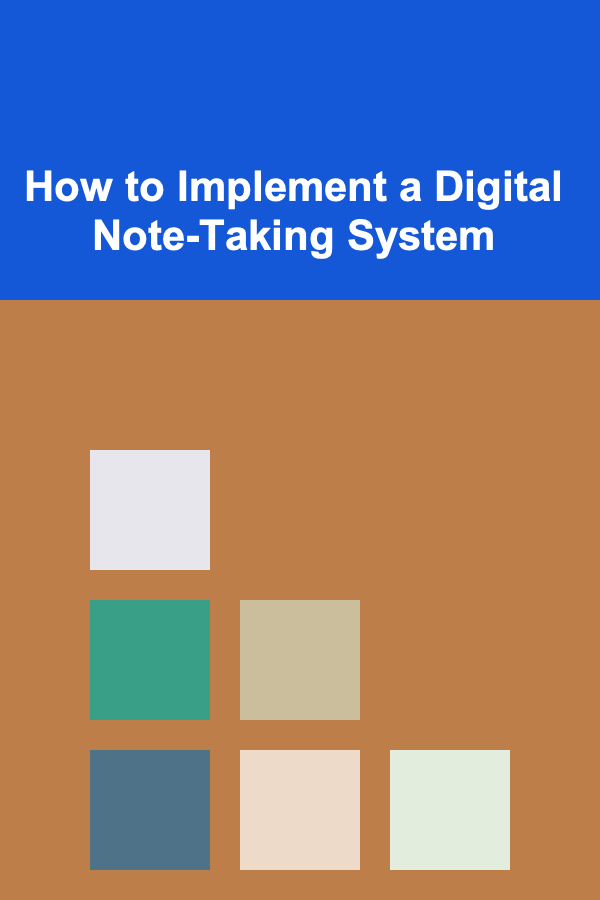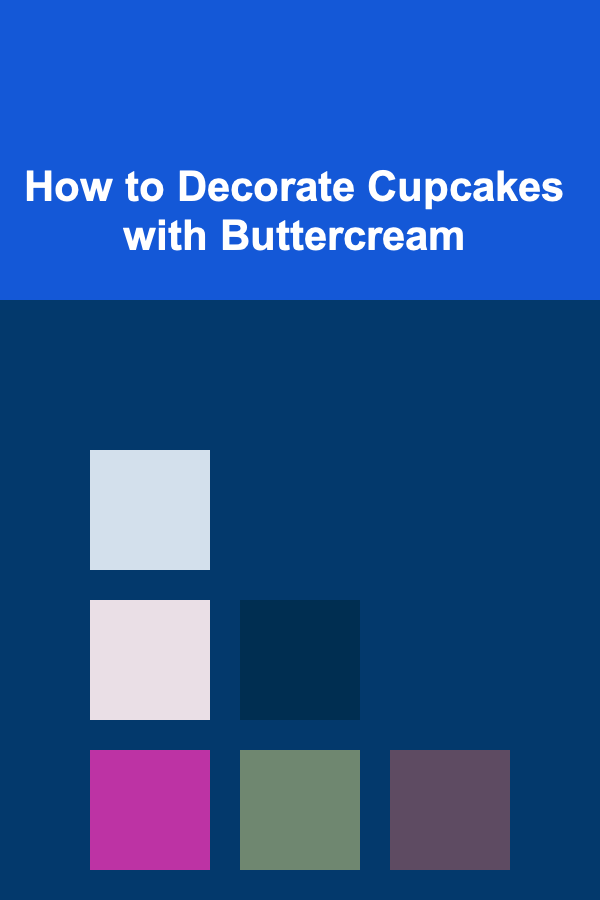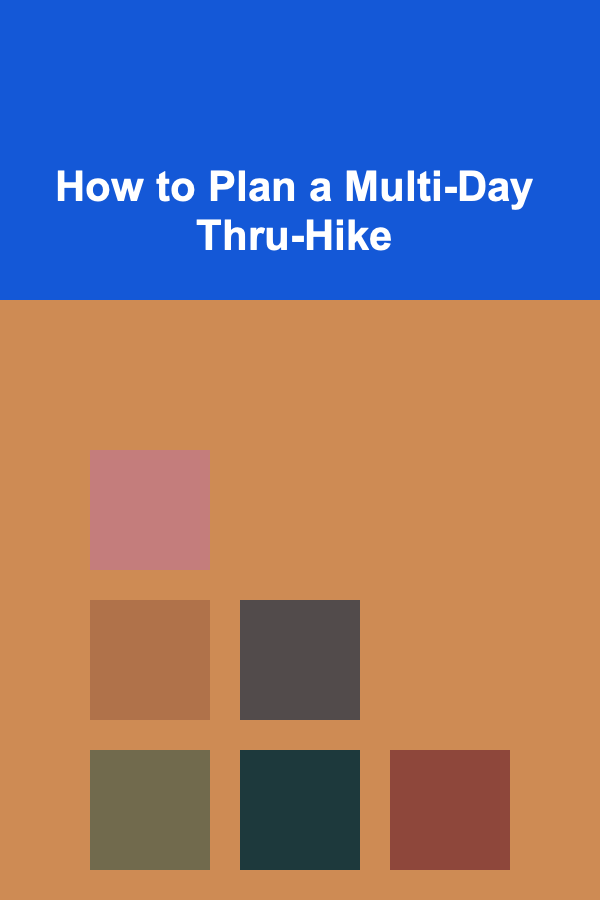
How to Implement a Digital Note-Taking System
ebook include PDF & Audio bundle (Micro Guide)
$12.99$8.99
Limited Time Offer! Order within the next:

In today's fast-paced digital age, effective note-taking has become essential for students, professionals, and anyone looking to enhance their productivity and organization. A well-implemented digital note-taking system can streamline information management, make retrieval easier, and transform how we capture and utilize knowledge. This comprehensive guide will explore the various aspects of implementing a digital note-taking system, covering the selection of tools, best practices, organization strategies, and more.
Understanding the Importance of Digital Note-Taking
1.1 Benefits of Digital Note-Taking
Digital note-taking offers various advantages over traditional methods, including:
- Accessibility: Notes can be accessed from multiple devices---laptops, tablets, and smartphones.
- Searchability: Digital notes can be easily searched, making it simple to find specific information quickly.
- Organization: The ability to categorize and tag notes allows for better organization.
- Integration: Many digital note-taking tools integrate with other applications, facilitating streamlined workflows.
1.2 Challenges of Traditional Note-Taking
Traditional note-taking methods, such as pen and paper, present several challenges:
- Limited Organization: Physical notes can become disorganized and cluttered.
- Difficult Retrieval: Finding specific information in handwritten notes can be time-consuming.
- No Backup Options: Paper notes are at risk of being lost or damaged without backup solutions.
Choosing the Right Digital Note-Taking Tools
2.1 Types of Note-Taking Applications
There are various types of digital note-taking applications available today:
- Text-Based Apps: Apps like Microsoft OneNote and Evernote focus primarily on text and basic formatting.
- Mind Mapping Software: Tools like MindMeister and XMind allow for visual representations of ideas.
- Task Management Apps: Applications like Notion and Todoist blend note-taking with task management functionalities.
2.2 Features to Look For
When choosing a digital note-taking tool, consider the following features:
- Cross-Platform Compatibility: Ensure that the app works across different operating systems (Windows, macOS, iOS, Android).
- Syncing Capabilities: Look for apps that automatically sync notes across devices.
- Formatting Options: Consider tools that provide rich text formatting, allowing for clear presentation.
- Collaboration Features: Choose applications that enable sharing and collaboration with others when necessary.
Setting Up Your Digital Note-Taking Environment
3.1 Organizing Your Workspace
An organized digital workspace enhances productivity:
- Clear Desktop Layout: Arrange your desktop icons and folders logically; this makes it easier to access your note-taking tools.
- Dedicated Folders: Create dedicated folders for different projects or subjects related to your work or studies.
3.2 Creating an Effective Folder Structure
A logical folder structure is key to maintaining organization:
- Hierarchical Organization : Use a hierarchy where main topics lead to subtopics. For example:
- Work
- Projects
- Project A
- Project B
- Projects
- Personal
- Hobbies
- Travel Plans
- Work
- Consistent Naming Conventions: Use consistent naming conventions for files and folders to simplify searching.
Implementing a Consistent Note-Taking Methodology
4.1 Cornell Method
The Cornell Method is an effective note-taking strategy:
- Layout: Divide the page into three sections: Cues, Notes, and Summary.
- Cues Column: After the lecture or meeting, fill out the cues column with keywords or questions.
- Summary Section: At the bottom, summarize the content covered in your notes.
4.2 Mind Mapping
Mind mapping provides a visual way to organize thoughts:
- Central Idea: Start with a central idea and branch out into related subtopics.
- Visual Elements: Use colors, images, and shapes to make connections clearer and stimulate memory.
4.3 Bullet Journaling
Bullet journaling is a flexible system combining writing and task management:
- Symbols and Short Sentences: Use symbols to indicate tasks, events, or notes, employing short sentences for clarity.
- Daily Logs: Maintain daily logs for tracking tasks and events.
Integrating Multimedia and Resources
5.1 Incorporating Images and Diagrams
Visual elements can enhance understanding and recall:
- Screenshots: Capture screenshots of important webpages or documents.
- Diagrams: Use drawing features or external tools to create diagrams that explain complex concepts.
5.2 Linking External Resources
Link relevant resources to your notes for quick reference:
- Hyperlinks: Embed hyperlinks to articles, videos, or other relevant documents within your notes.
- Reference Materials: Include citations or references for research purposes.
Enhancing Collaboration and Sharing
6.1 Collaborative Platforms
Choose platforms that facilitate collaboration:
- Google Docs: Excellent for real-time collaboration, allowing multiple users to edit simultaneously.
- Notion: Offers organized spaces for team collaboration and sharing notes.
6.2 Sharing Notes Effectively
Learn how to share notes while maintaining control:
- Permissions: Set appropriate permissions to restrict editing or viewing as needed.
- Exporting Options: Use exporting features to share notes in various formats (PDF, Word, etc.).
Reviewing and Revising Your Notes
7.1 Regular Review Sessions
Schedule regular review sessions to reinforce learning:
- Weekly Reviews: Dedicate time each week to go through your notes and refresh your memory.
- Highlight Key Points: Use highlighting or color-coding to mark essential information during reviews.
7.2 Reorganizing and Updating Notes
Keep your notes current and relevant:
- Regular Updates: Revise notes with new information as you learn or progress in projects.
- Archiving Old Notes: Move outdated notes to an archive folder to declutter your workspace.
Maintaining Security and Backup Practices
8.1 Data Encryption
Protect sensitive information in your notes:
- Encrypted Applications: Use note-taking apps that provide data encryption for added security.
- Two-Factor Authentication: Enable two-factor authentication for accounts containing sensitive information.
8.2 Backup Solutions
Implement robust backup practices to prevent data loss:
- Cloud Storage: Store notes in cloud services like Google Drive or Dropbox, which offer automatic backups.
- Local Backups: Regularly back up notes to an external hard drive or USB stick.
Troubleshooting Common Issues
9.1 Overwhelm from Too Many Notes
Managing a large volume of notes can become overwhelming:
- Prioritize and Categorize: Focus on organizing notes based on priority and relevance.
- Use Tags: Employ tags to streamline searching and categorization.
9.2 Technical Glitches
Occasionally, technical issues may arise:
- Frequent Updates: Keep your note-taking app updated to minimize bugs or glitches.
- Support Resources: Utilize support forums or help centers provided by the application developers if problems persist.
Future Trends in Digital Note-Taking
10.1 AI and Machine Learning Integration
The future of digital note-taking may include advanced technologies:
- Smart Suggestions: AI could provide suggestions for organizing notes or summarizing content effectively.
- Personalized Learning: Machine learning could tailor experiences based on user behavior and preferences.
10.2 Voice Recognition Technology
Voice recognition technology is rapidly advancing:
- Voice-to-Text Features: Many note-taking apps now feature voice-to-text capabilities, enabling hands-free note-taking.
- Command Recognition: Future innovations may allow users to navigate and manage notes using voice commands.
Conclusion
Implementing a digital note-taking system offers significant benefits for anyone looking to enhance their productivity and organization. By selecting the right tools, creating a structured approach, and incorporating multimedia elements, you can optimize your note-taking process.
As technology continues to evolve, staying informed about emerging trends and techniques will further refine your digital note-taking abilities. Embrace the power of digital note-taking to capture knowledge, facilitate collaboration, and streamline your workflow in an increasingly interconnected world. With diligence and adaptation, you can transform your note-taking experience into an invaluable asset for personal and professional success.
Reading More From Our Other Websites
- [Home Space Saving 101] How to Save Space in Your Bathroom with Over-the-Door Organizers
- [Organization Tip 101] How to Create a Visual Display of Volunteer Impact
- [Organization Tip 101] How to Restore Antique Furniture with Stripping Techniques
- [Home Renovating 101] How to Estimate the Cost of Adding a Sunroom to Your Home
- [Skydiving Tip 101] First-Leap Fundamentals: What to Expect in Your Beginner Skydiving Lesson
- [Gardening 101] Step‑by‑Step Guide to Creating a Low‑Maintenance Indoor Herb Garden
- [Organization Tip 101] How to Set Up a System for Tracking Expenses and Budgeting
- [Home Lighting 101] How to Update Your Home's Lighting Without a Full Renovation
- [Biking 101] How to Choose the Best Kids Bikes for Different Ages and Riding Skills
- [Organization Tip 101] Best Organization Tools for Recipe Collection

How to Create a Checklist for Designing Mobile-Friendly Emails
Read More
How to Store Ingredients for Easy Access During Cooking
Read More
How to Decorate Cupcakes with Buttercream
Read More
How to Plan a Multi-Day Thru-Hike
Read More
10 Tips for Designing a Kid-Friendly Living Room
Read More
10 Tips for Cartoonists: Storytelling Through Visuals
Read MoreOther Products

How to Create a Checklist for Designing Mobile-Friendly Emails
Read More
How to Store Ingredients for Easy Access During Cooking
Read More
How to Decorate Cupcakes with Buttercream
Read More
How to Plan a Multi-Day Thru-Hike
Read More
10 Tips for Designing a Kid-Friendly Living Room
Read More